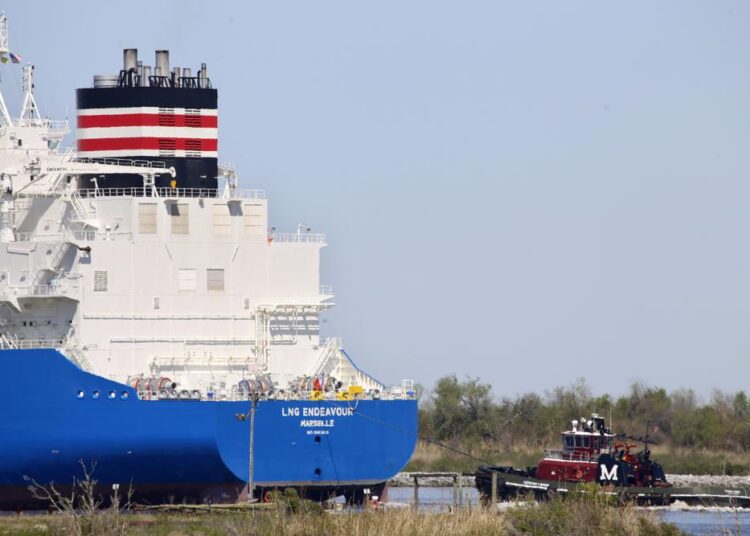NEW YORK — As winter nears, European nations, desperate to replace the natural gas they once bought from Russia, have embraced a short-term fix: A series of roughly 20 floating terminals that would receive liquefied natural gas from other countries and convert it into heating fuel, according to AP.
Yet the plan, with the first floating terminals set to deliver natural gas by year’s end, has raised alarms among scientists who fear the long-term consequences for the environment. They warn that these terminals would perpetuate Europe’s reliance on natural gas, which releases climate-warming methane and carbon dioxide when it’s produced, transported and burned.
Some scientists say they worry that the floating terminals will end up becoming a long-term supplier of Europe’s vast energy needs that could last years, if not decades. Such a trend could set back emission-reduction efforts that experts say haven’t moved fast enough to slow the damage being done to the global environment.
Much of the liquefied natural gas, or LNG, that Europe hopes to receive is expected to come from the United States. The need arose after Russia’s invasion of Ukraine shattered its ties with Europe and led to a cutoff of most of the natural gas that Moscow had long provided. Along the US Gulf Coast, export terminals are expanding, and many residents there are alarmed about the rise in drilling for gas and the resulting loss of land as well as extreme weather changes associated with burning fossil fuels.
“Building this immense LNG infrastructure will lock the world into continued reliance on fossil fuels and continued climate damage for decades to come,” said John Sterman, a climate scientist at the Massachusetts Institute of Technology.
Natural gas contributes significantly to climate change — both when it’s burned, becoming carbon dioxide, and through leakages of methane, an even more potent greenhouse gas. Yet European nations, which for years have been leaders in shifting to cleaner energy, have proposed bringing more than 20 floating LNG terminals into their ports to help compensate for the loss of Russia’s natural gas.
The terminals, which tower over homes and stretch nearly 1,000 feet (304 metres), can store roughly 6 billion cubic feet (170,000 cubic metres) of LNG and convert it into gas for homes and businesses. They can be built faster and more cheaply than onshore import terminals, though they’re costlier to operate, according to the International Gas Union.
“Every country needs to prepare for a scenario where there may be a cut in Russian supplies,” said Nikoline Bromander, an analyst with Rystad Energy. “If you are dependent, you need to have a backup plan.”
Many environmental scientists argue that the money being earmarked for the ships — which cost about $500 million each to build, according to Rystad — would be better spent on rapidly adopting clean-energy or efficiency upgrades that could reduce energy consumption.
Constructing more solar or wind farms, which takes years, wouldn’t immediately replace Russian gas. But with adequate funding, Sterman suggested, greater energy efficiencies — in homes, buildings and factories, along with the deployment of wind, solar and other technologies — could vastly reduce Europe’s need to replace all the gas it’s lost.






Discussion about this post